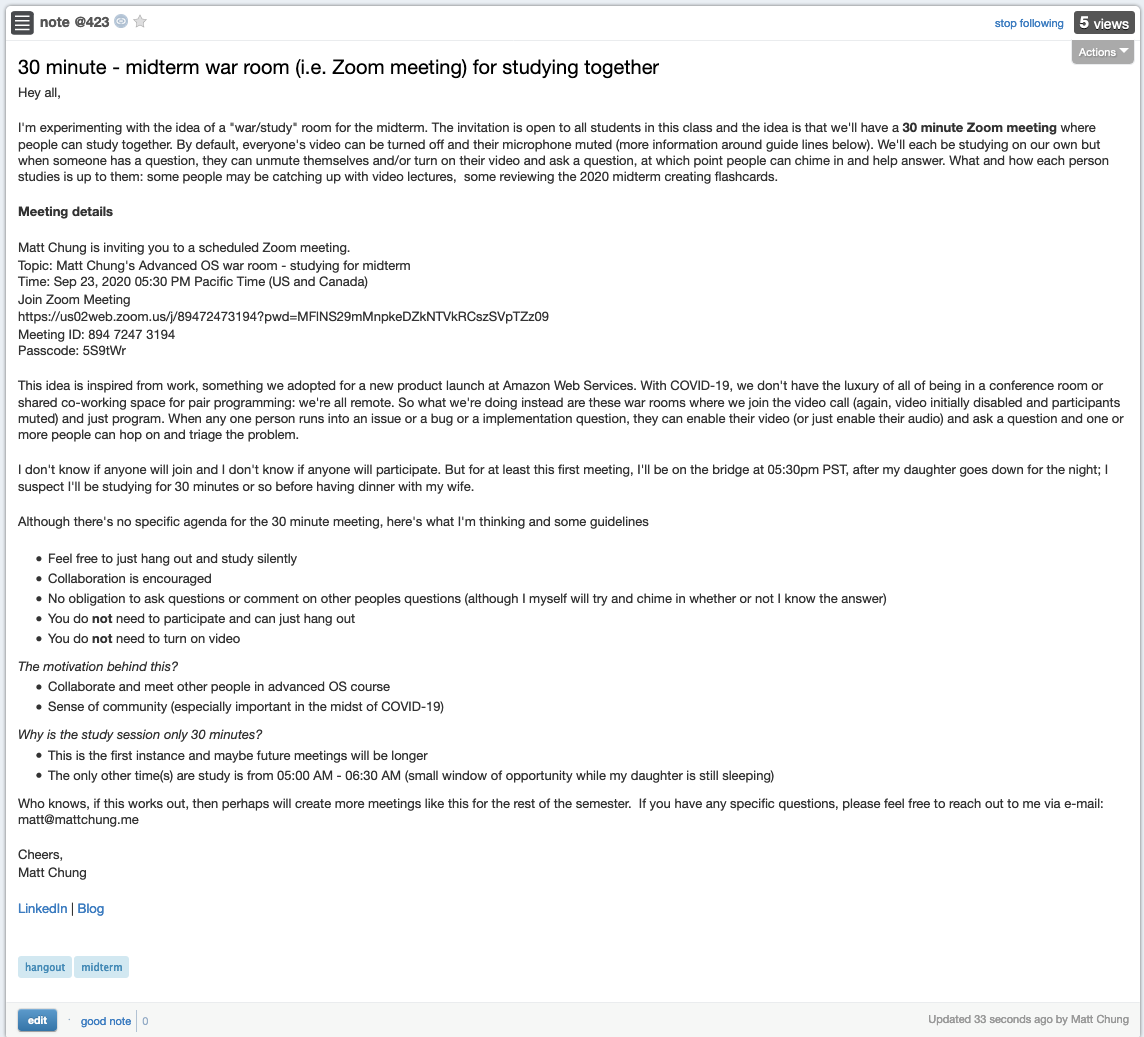Thanks to my wife for encouraging me to pull the trigger and start my online study group (i.e. the “war room”) for my advanced operating systems course. Basically, the idea came about after chatting with a class mate of mine and during our video call, I realized how many of us are basically studying alone (in isolation) without practically no peer interaction. On top of that, we’re in the midst of COVID-19 pandemic, most of us cooped up inside our homes or apartments, disconnected from the rest of the world.
We’re living in weird times …
Anyways, how does this warm room work? It starts with me scheduling a 30 minute zoom call and then sharing the meeting details with the rest of the students, publishing a note on the the class forum website (i.e. Piazza). The invitation is open to all students and the meeting itself is informal and low pressure. However, there are a few guidelines to help steer the conversation:
- Feel free to just hang out and study silently
- Collaboration is encouraged
- No obligation to ask questions or comment on other peoples questions (although I myself will try and chime in whether or not I know the answer)
- You do not need to participate and can just hang out
- You do not need to turn on video
Here’s what I had originally sent out to the class:

Writing
- Published on drifting apart (as part of my daily review)
- Published my first set of guesses to the mid term questions
Parenting and family matters
- Held Elliott in my arms while we danced to her favorite song (above) titled called Breathing by Hamzaa. As soon as this song plays on our bluetooth sound bar speaker, Elliott immediately tosses her arms up in the air (even if her hands are full of food) and starts rocking back and forth. I hope she never loses the confidence to dance so freely like us adults.
What I am grateful for
- A wife who I’ve learned to develop so much trust with over the years and one of the very few people that I can open up to completely and share thoughts that cycle through my head.
What I learned
- Writing a simple line parser in C one has to protect against so many edge cases
- Most of the C string functions return pointers (e.g. strnstr for locating substring)
- Learned how you can ensure that you are not statically creating a large data structure by using the -w-larger-than=byte_size compiler option
- Able to visualize what an IPv6 data structure looks like underneath the hood: 16 char bytes. Also these are big endian, the least significant bit starting first.
Work
- Wrote some code that performed some string parsing (so many dang edge cases)
